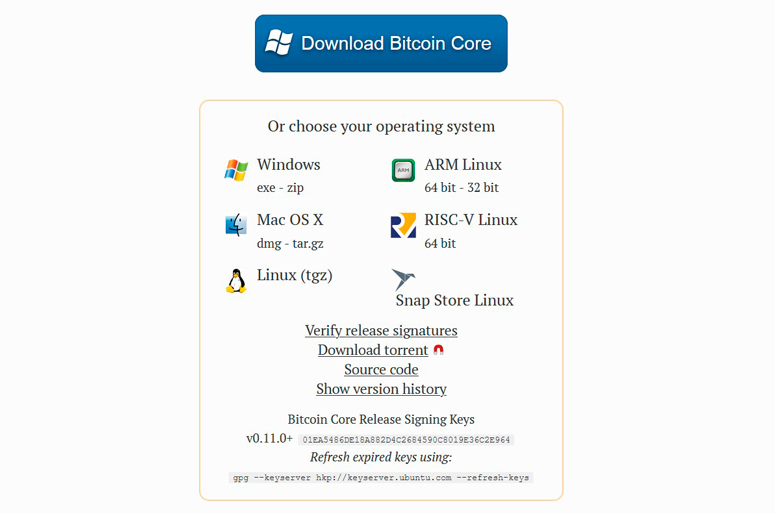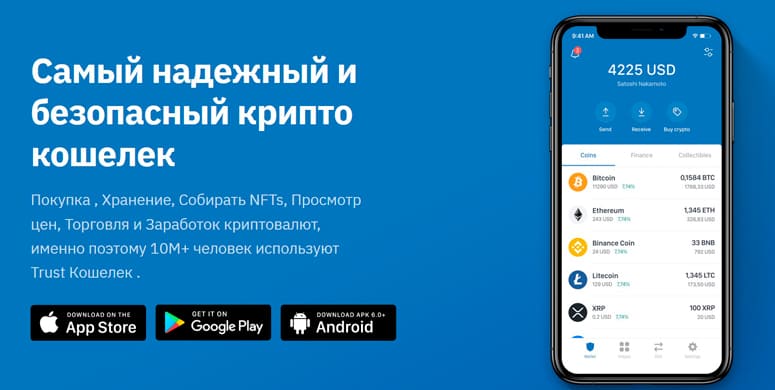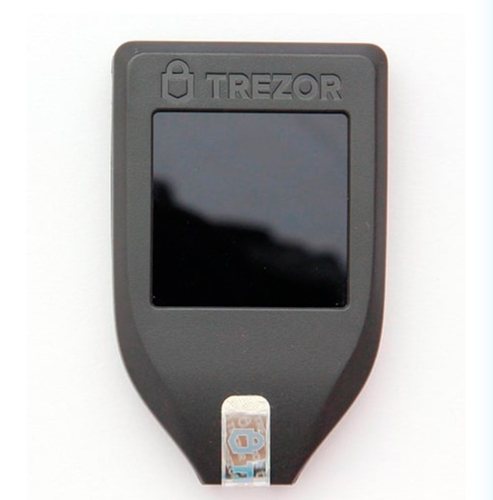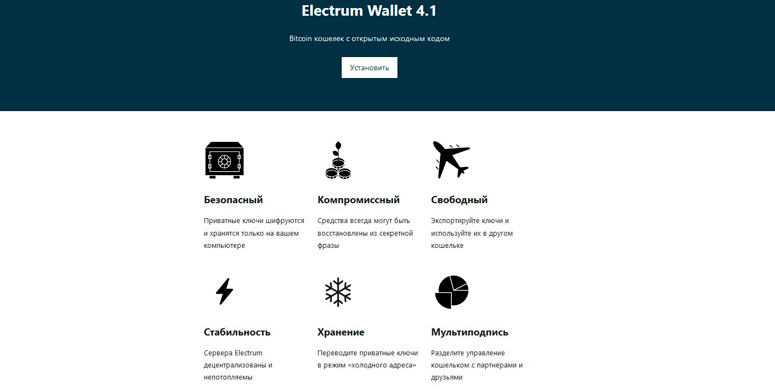To own cryptocurrency, you don’t need a bank or an exchange, you can dispose of it however you want. For example, to save BTC, it is enough to create a bitcoin wallet and then transfer the coins to it. These devices and applications have different functions and storage methods.
What is a bitcoin wallet
To work with cryptocurrency, software is used that tracks the digital signatures of transactions in the blockchain. A bitcoin wallet is a service for working with digital assets. It allows you to:
- Send and receive coins.
- Keep track of the balance.
- Convert BTC to altcoins. Such a function is not available in all wallets, but some applications are tied immediately to the cryptocurrency exchange.
The application for storing digital assets contains 2 keys: public and private. The first is called the receiving address, and the second gives full access to the funds. This is a password that must be kept secret.
Varieties
The choice of an app or device for storing and sending cryptocurrency is influenced by:
- Anonimato.
- Price.
- Popularity.
- Convenience when making a transaction.
- Segurança.
These requests are satisfied by different types of wallets:
5020 $
bônus para novos usuários!
A ByBit fornece condições convenientes e seguras para a negociação de criptomoedas, oferece comissões baixas, alto nível de liquidez e ferramentas modernas para análise de mercado. Oferece suporte a negociações à vista e alavancadas e ajuda traders iniciantes e profissionais com uma interface intuitiva e tutoriais.
Ganhe um bônus de 100 $
para novos usuários!
A maior bolsa de criptomoedas onde você pode iniciar sua jornada no mundo das criptomoedas de forma rápida e segura. A plataforma oferece centenas de ativos populares, comissões baixas e ferramentas avançadas para negociação e investimento. O registro fácil, a alta velocidade das transações e a proteção confiável dos fundos fazem da Binance uma ótima opção para traders de qualquer nível!
- Desktop.
- For mobile devices.
- Hardware.
- Paper-based.
- Multisig.
Each has advantages and disadvantages.
Desktop
This variety includes applications that are downloaded to computers and laptops. Such services are:
- “Lightweight”. When they are used, the blockchain is not loaded completely.
- “Thick”. When they are installed, the history of all transactions is downloaded to the hard disk. You will need time for synchronization (up to several days), as well as a sufficient amount of storage. For example, as of 2021, the Bitcoin Core cryptocurrency wallet requires at least 400 GB.
In terms of security, desktop applications are positioned between hardware and browser-based applications. Constant software updates help in protecting against viruses or Trojans and are useful for prevention.Benefits:
- Support for multiple cryptocurrencies (not always).
- Works on computers, tablets.
- Private key is under the control of the user.
- Free to use.
Disadvantages:
- The owner has to control the security on their own.
- Can take up a lot of space on the hard disk (in the case of “thick” crypto wallets).
How it works
The software is installed on computers and laptops with operating systems Windows, Linux, macOS. It helps to manage bitcoins. Uploading the blockchain to a hard or external disk provides anonymity. No one can track the user’s payments, as well as wallets tied to an IP address.
How to create
Installing the software is quite simple, but requires some time. To do this, the following steps are performed:
- Registration on the official website of the Bitcoin wallet (not in all cases).
- Downloading the software taking into account the operating system.
- Unpacking the installation file and running the installation.
- Selecting the hard disk where the blockchain will be loaded.
- Waiting for synchronization.
- Setting up the Personal Cabinet.
- Creating a backup copy.
The most popular
The most famous bitcoin wallets are represented by the following services:
- Bitcoin Core – official software for working with the BTC blockchain.
- Electrum.
- BitPay.
- Coinomi.
- ArcBit.
- Wasabi.
- Bither.
- Armony.

For mobile
This type is installed on smartphones and tablets with iOS and Android operating systems. The application provides access to bitcoin through a cell phone, with its help, transactions to buy, exchange and withdraw digital assets are carried out. Having scanned the QR code, it will be possible to make transactions even faster. possible functions:
- Registration system.
- A profile that contains all personal information for managing transfers.
- Generation of new addresses for transactions.
- PIN codes to access coins.
- Support for multi-currency bitcoin exchange.
- Managing the purchase or sale of cryptocurrency.
- Tracking transactions in real time.
- Balance display.
- Sending and receiving payments via bitcoin-URL, QR codes.
- Pop-up notifications.
How it works
Mobile wallets perform simplified payment verification. Only a small part of the blockchain is downloaded, and the authenticity of the sent funds is confirmed on another node in the Bitcoin network.
How to create
To work with the mobile application it is recommended:
- Go to the Apple Store (iOS) or Google Play (Android) service store. Links to mobile clients can also be found on the websites of cryptocurrency wallets.
- Find and download the necessary application.
- Write down the phrase for recovery.
- Set a strong password.
- Copy the generated address to receive BTC.
The most popular ones
Well-known mobile wallets include:
- Trust Wallet.
- Trustee Wallet.
- Blockchain.
- Bitcoin Wallet.
- Mycelium.
- Airbitz.
- Paytomat.

Web wallet
Among cryptocurrency wallets, you can choose online services that provide access to bitcoins through a web browser, but are not suitable for long-term storage of digital assets due to vulnerability to cyber threats. They are very attractive to hackers. This type of bitcoin wallet is recommended for storing cryptocurrency in small amounts or for a short period of time. It is recommended to connect two-factor authentication for better security.Advantages:
- Accessible anytime wherever there is internet.
- Easy to send cryptocurrency or convert to fiat when needed.
- Multiple digital coin options available.
- Most services support hardforks and koin trocas.
Disadvantages:
- Risk of hacking.
- No private key management.
How it works
The principle of operation of web applications is the same as that of mobile services. Users can log in to the Personal Cabinet from any internet-connected device to make transactions. Online services store passwords on the company’s server. But it is constantly available online and controlled by a third party, and this is not secure.
How to create
Before working with such a repository, you should register on the website of the cryptocurrency wallet. To do this, it is enough to enter your mail, password. Many services require to pass identification. It includes uploading a screen shot of passport data or a driver’s license. Some ask for photo confirmation of identity using a computer camera or phone.
The most popular
Among the well-known web applications can be distinguished:
- Coinbase.
- Círculo.
- Blockchain.
- Strongcoin.
- Xapo.

Hardware
This BTC wallet is referred to as a “hardcore” wallet. It resembles a USB drive and stores bitcoins offline. Its cost depends on the manufacturer.Advantages:
- The safest way to store cryptocurrencies.
- Support for multiple digital assets at once.
- User-friendly software with free updates.
- Private keys under personal control.
Disadvantages: Purchase costs.
- Possible discovery of vulnerabilities in the future.
- Likelihood of physical loss of the device.
How it works
Hardware storage features depend on the model. Some have increased protection in the form of PIN codes, phrases for restoring backups. Other devices are easy to use and resemble a regular flash drive not only in appearance but also functionally…
Trezor and KeepKey hardware crypto wallets have display screens that allow you to view transaction details without having to connect the devices to a PC.
Despite the differences, all services provide an address where the VTS are offline. Hard vaults are like miniature computers that can process bitcoin transactions.
Where to purchase
They should only be ordered from the developer or an official retailer. Well-known manufacturers are:
- Ledger.
- Trezor.
- Coldcard.
The most popular
Popular models of wallets are presented in the table.
| Nome | Price as of July 2021, rubles |
|---|---|
| Trezor T | 15 490 |
| Trezor One | 6199 |
| Coolwallet Pro | 13 500 |
| Cobo Vault Pro | 15 900 |
| Ledger Nano X | 15 490 |
| Ledger Nano S | 6900 |
| Coldcard | 13 900 |

Paper
A cryptocurrency wallet in this case is a piece of paper containing a public bitcoin address and the associated private key. This is a secure way to store cryptocurrency. All the data is offline. To avoid losing access, owners are advised to make multiple copies. However, transactions will require more effort than the other type of storage.Advantages:
- Free of charge.
- Storage in a secure location.
- Private key under personal control.
- Convenience for long-term investing.
Disadvantages:
- Suitable for only one coin.
- Susceptible to fire.
- Uncomfortable to conduct transactions.
- Can be stolen.
Multisourcing
In this case, only the user identified by the public key hash can conduct bitcoin transactions. It is also the address of the cryptocurrency. The protocol applies different rules that define the keys and the type of control they have. Accounts with multiple signatures (multisig) have been in use since 2012. In such a wallet, instead of one private key, 3 keys are bound at once. Accordingly, the addresses start with 3 instead of 1. You can set such rules during configuration:
- At least 2 out of 3 keys are required for transferring funds.
- 3 out of 3 signatures are needed to complete the transaction.
Pros:
- Security of bitcoin storage.
- Convenient for long-term use.
Minuses:
- Complicated setup scheme.
- More difficult to conduct transactions.
Most famous:
- Unchained Capital.
- Casa.
- Blockstream Green.
- Electrum.

Which Bitcoin wallet to choose
When selecting a cryptocurrency wallet, you can be guided by several factors. If the owner buys assets as a long-term investment and does not plan to regularly access funds, it is best to buy a hardware device. If a bitcoin wallet will have to be used frequently for transactions, a mobile storage will be suitable. Desktop variations are safer than web versions. The same applies to mobile wallets. However, they are not immune to hacking, because they work online. It is always advisable to activate two-factor authentication, which is offered by the service itself.
How to deposit and withdraw BTC
Personal accounts of bitcoin wallets are different, but all of them contain functions for depositing and withdrawing funds. In the case of the first operation, you need to select the “Deposit” tab, “Deposit” or the airplane icon in the menu immediately after authorization. A window will appear with the choice of cryptocurrency, deposit method and amount. The service will provide a link to a page with a description of the trading commission and transaction costs. Make a deposit in BTC can be made in the standard way – enter the address in another service or cryptocurrency wallet, from which the coins are supposed to be sent. It is also necessary to specify the amount of the transaction. The number of transaction confirmations for bitcoin crediting will be from 2 to 6. To make a withdrawal, you need to:
- Select “Send”.
- Insert the address of the recipient’s wallet.
- Specify the amount of BTC to send.
- Agree with the default transaction fee or specify your own value. It will affect the confirmation time.
- Confirm the transfer.
Bitcoin transactions on different services take up to 30 minutes on average. This time depends on the load on the network.
Conclusões
There are different types of wallets: mobile, desktop, hardware, multi-signature. They are provided by service providers or manufacturers.
If you emphasize safety, it is advisable to store most of the digital currency on hardware devices. A small amount of coins can be kept in a mobile app to quickly carry out the required transaction.
Regardless of the type of wallet, it is advisable to follow precautions:
- Update the software.
- Use two-factor identification.
- Apply multi-signatures.
- Enter non-standard passwords.
- Store savings in different places, most of them in a standalone device.
Perguntas frequentes
✅ How do I set up hardware storage?
Each device has its own setup steps.
❕ How to speed up Bitcoin Core synchronization?
The user cannot affect the speed. The vault will be unavailable until the entire blockchain is downloaded to the hard disk.
❓ How many private keys are needed for multi-signature?
A multi-signature wallet requires more than one private key to complete transactions.
☑ What is the wallet address for receiving bitcoins?
The BTC address is alphanumeric and starts with 1 or 3.
💻 How to get a Bitcoin address?
Each service generates it automatically.
❔ What should I do if my hardware device is lost or damaged?
If a backup was made, there is a chance to restore the information. Otherwise, the user will not be able to access their funds and all coins will be lost.
❌ Are bitcoin wallets safe?
Cryptocurrency storage services with internet access (e.g. desktop, mobile or web) will be vulnerable.
Há algum erro no texto? Destaque-o com o mouse e pressione Ctrl + Entrar















